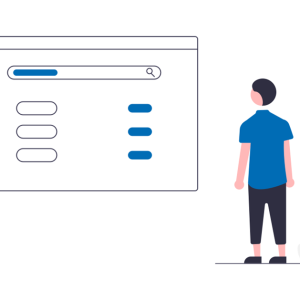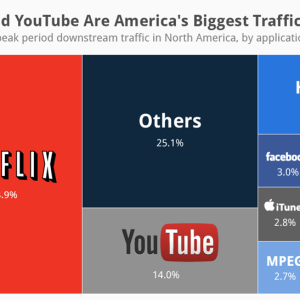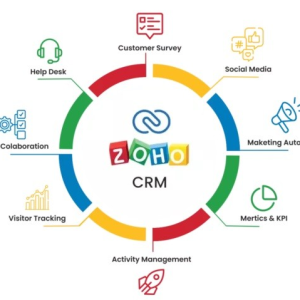Introduction
To enhance your website’s Search Engine Optimization (SEO), it is imperative that you equip yourself with the necessary know-how to carry out a content gap analysis. By conducting this process, you will be able to discern the disparities in content between your website and those of your competitors. Armed with this knowledge, you can proceed to bridge the gaps with fresh and relevant content, thereby boosting your SEO ranking. In this guide, we will explicate the intricate details of conducting a content gap analysis and provide actionable insights on how to proceed with the results.
What Is A Content Gap?
A content gap, in essence, signifies the disparity in the scope of topics covered by two websites. Let’s consider an example – if Website A provides an in-depth analysis of “canine breeds” but the corresponding domain of Website B lacks such information, a content gap is presumed to exist between the two.
To conduct a comprehensive content gap analysis, you must engage in an extensive comparison of the content present on your website and that of your competitors. This critical undertaking enables you to meticulously scrutinize the respective topics addressed, thereby helping you pinpoint the areas where your competitors hold an edge over your content.
Upon successful identification of these discrepancies, it is pertinent that you create fresh, bespoke content, catering to these gaps, as it leads to an undeniable improvement in your SEO ranking.
How To Conduct A Content Gap Analysis
There are many ways to perform content gap analysis, but here in this guide, we will curate three most popular methods used by several successful businesses.
Method 1: Google Search Console

First on the top is the Google Search Console. It is a free tool provided by Google that allows users to see the keywords that your’s or other’s websites are rankinng for.
1. Visit Google Search Console and sign in with a Google account
Enter Google Search Console and sign in or sign up for your Google account with your personal or professional mail details.
2. Select the website that you want to analyze from the list of websites
Choose the “Select property” drop-down menu and start by selecting the website that you want to analyze, i.e to enter the URL of the website you want to analyze.
3. Click on the “Search Traffic” tab and then click on “Search Analytics.”
Once you have done this, now you can view the keywords you are or your competitors are ranking for.
4. In the “Search Analytics” report, select “Pages” from the drop-down menu
You can also view each page seperately for what they are ranking for and the keywords that are performing well can be seen with other features such as click-rate etc.
5. Click on the “Queries” tab and then select “Position.”
Position tab will show you the position of the website ranking on SERPs.
6. Copy the list of keywords into a spreadsheet
To acquire a comprehensive keyword analysis, you must first transfer the list of keywords into a spreadsheet. This can be readily achieved by clicking the “Copy to clipboard” button, located at the summit of the report.
7. Repeat steps 1-6 for your competitor’s website
Subsequently, to undertake an all-inclusive analysis, you must rinse and repeat steps 1-6 for your competitor’s website. This proffers a definitive catalogue of the keywords that your website ranks for, alongside their corresponding positions. Furthermore, you will be equipped with a detailed list of the keywords that your competitors’ website ranks for.
8. Compare the two lists of keywords
Comparing the two lists of keywords, you must meticulously analyze the keywords that are common to both. These are the keywords that you are already ranking for. In contrast, the ones that exclusively feature on your competitor’s list represent the keywords that you are not ranking for, and therefore warrant focused attention.
9. Create new content that covers the keywords that you are not ranking for
Finally, a definitive solution to improving your SEO ranking is to curate fresh and innovative content catering to the keywords that you are not currently ranking for. Adopting this approach can undoubtedly yield remarkable results.
Method 2: Moz Keyword Explorer

The second method is using Moz Keyword Explorer, a paid tool, offering a free trail. And to use this tool, you can:
1. Visit Moz Keyword Explorer and sign up for a free trial.
2. Enter your competitor’s website URL into the “Site Explorer” tool
I.e, if your competitor’s website is www.example.com, enter this into the “Site Explorer” tool.
3. Now select the “Keywords” tab and then click on the “All Keywords.”
This will display a list of all the keywords that your competitor’s website is ranking for.
4. Export the list into a CSV file or copy it to a spreadsheet.
Checkout the “Export” button at the top of the report to perform this task.
5. Repeat steps 1-4 for your website now.
6. Compare the two lists of keywords
The keywords you are missing on your sheet but are on the competitor’s sheet are the keywords you are looking to rank for, i.e your competitors have ranked for these keywords but you have not, so you should now focus on these to rank well.
7. Save the new list with missing keywords and create new content that covers the keywords that you are not ranking for.
Method 3: Ahrefs Site Explorer

The third method is to use the Ahrefs Site Explorer, a paid tool, offering a free trail for a period of time. To make use of this:
1. Visit the Ahrefs Site Explorer and sign up for a free trial.
2. Enter the URL of the website and push enter.
3. Select the “Content” tab and then click on the “All pages” sub-tab.
4. Using the export button the page, export results to a CSV file.
5. Repeat steps 2-4 for your website like in the 2nd method.
6. Open both CSV files in Ms Excel.
7. Compare the two lists of pages and look for any gaps, and continue like you did in the 2nd method.
I.e If you find any gaps, create content using these missing keywords to fill the gaps and improve your SEO, I.e if you do have a keyword, say if, “Dog Bone”, and your competitor is ranking for it, and has a good click-rate, now create a content centering the keywords to improve SEO.
What to do with the results?
After having conducted a meticulous content gap analysis, the time has come to deliberate over the course of action that must be taken in light of the results. The multifarious findings can be leveraged in myriad ways to optimize the quality of your website’s content. One of the approaches entails creating novel content to fill the chasms that you have unearthed.
This can be achieved by fabricating avant-garde blog posts, articles, or even immersive videos, brimming with captivating imagery, and thought-provoking graphics. Alternately, you can harness the results of the content gap analysis to elevate the overall standard of your website’s content by augmenting it with an array of multimedia elements, ranging from resplendent images, awe-inspiring videos, to elucidative infographics, to name a few.
Tips for conducting a content gap analysis
In order to attain a comprehensive and exhaustive coontent gao analysis, relying on a solitary tool such as Google Search Console may not suffice. I.e, it is indispensable to utilize an array of tools such as Moz Keyword Explorer, to gain an extensive outlook.
In addition to this, comparing the data you collect with your competitor’s data can aid in the identification of discrepancies and deficiencies between your website and your rival’s website.
In order to maintain an up-to-date knowledge of the evolving trends and patterns in your website’s content gaps, conducting a content gap analysis on a recurrent basis can be instrumental.
The results of the content gap analysis can be harnessed to amplify the quality of your website’s content and enhance its search engine optimization (SEO) ranking by developing fresh and compelling content that fills the gaps identified by the analysis.
When To Do Content Gap Analysis?
To retain an up-to-date understanding of the rapidly transforming SEO landscape, it is paramount to conduct a content gap analysis on a recurring basis, perhaps with a frequency as high as once a month. This practice will not only facilitate an assessment of the content gaps between your website and your competitors’ websites, but it will also enable you to monitor the dynamic changes in your SEO ranking with an eagle eye.
FAQs On Content Gap Analysis
1. How do I know my competitors?
To unearth your competitors in the cutthroat world of digital marketing, there are a plethora of strategies that can be employed. One tactic that can be efficacious is harnessing the potential of a tool like Google AdWords Keyword Planner, which can provide a plethora of valuable insights by showcasing the websites that are vying for the same keywords as your website.
Alternatively, a more simplistic yet equally effective approach is to conduct a basic Google search using your main keywords. The websites that materialize on the first page of the search results can be considered your competitors, and can offer valuable insights into their content strategies and market positioning.
2. What if I can’t find any content gaps?
In the event that you are unable to identify any vacuums in your content, it could potentially be because your website has already achieved a commendable ranking for all the keywords that you have aimed to target. Should this be the case, you might want to entertain the notion of broadening your keyword inventory. On the other hand, it could be probable that your adversaries are underperforming in terms of the keywords that you are targeting. In such an event, you might want to consider setting your sights on a different set of keywords.
3. What should I do after filling the content gap?
Following the successful execution of content gap filling, it would be judicious of you to continuously monitor the fluctuations in your SEO rankings so as to gauge whether or not there has been a discernible change. Likewise, you should also maintain a watchful eye over the traffic to your website to detect any increases in the number of visitors. If you are able to detect a favorable change in your SEO rankings and website traffic, then it would be recommended that you press ahead with the task of filling any other existing gaps in your content.
Conclusion
If your aim is to enhance your SEO performance and fill content gaps, then embarking on a content gap analysis would undoubtedly prove to be an auspicious initiation point. Through scrutinizing the content gaps that exist between the content present on your website and the content that is featured on your competitors’ websites, you would be in a position to create new content that can be employed to plug those gaps, hence bolstering your SEO performance.
Furthermore, the conclusions drawn from a content gap analysis could be utilized to refine and amplify the quality of the content featured on your website holistically.
By adhering to the guidelines set out in this guide, you would be able to effectively execute a content gap analysis and put the findings to good use in your quest to elevate your SEO performance to unprecedented heights. However, if you are faced with any predicaments or uncertainties, it would be prudent of you to give serious thought to the notion of hiring an SEO company to assist you in your endeavors.
Enlisting the services of an SEO company would afford you the benefits of their expertise and enable you to conduct a comprehensive content gap analysis and improve your website’s SEO performance without breaking a sweat. In the event that you are at a loss with regards to where to begin, 12 Channels boasts the requisite tools and resources to expediently and effectively facilitate the entire process, and you can even avail yourself of a free consultation with an SEO company.

























